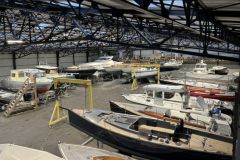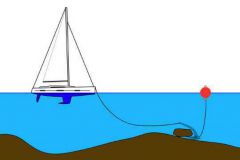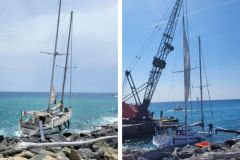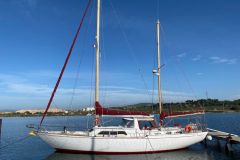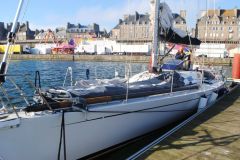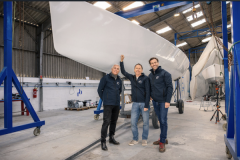Different chainplate versions
In Episode 1, Matt tackled the manufacture of Duracell front plates. Here he has to make 3 of them, a first for Code 0. This one is made on a workbench. Matt insulates the stainless steel tube from carbon with a layer of fiberglass to prevent corrosion. In 2 successive passes, he adds the layers of unidirectional carbon, taking care to widen them at the base to increase the bonding surface to the front bulkhead, and enable better absorption of sail forces which, in the absence of a forestay, can vary in direction. The part is finally glued, without lamination, as it will later be held in place by the bowsprit.
Next comes the chainplate, which will house the staysail. It is mounted on a bulkhead, which Matt had previously cut to remove a plywood insert. In its place, he laminates a coosaboard sandwich insert, onto which the carbon unidirectionals of the chainplate are laminated. The part is finally inserted into the bulkhead.
Finally, the front forestay chainplate is installed. Accessibility is limited, but stratification turns out to be easier than expected.
Reflecting on the bowsprit
In the second episode, after finalizing the chainplate integrations, including filling and laminating the holes in the deck, Matt turns his attention to anchor kinematics with a specialist. He tests several models, and discusses the respective merits of shackles and swivels for connecting chain and anchor. While the former is simpler and more reliable, its size seems problematic for Duracell's bowsprit.




